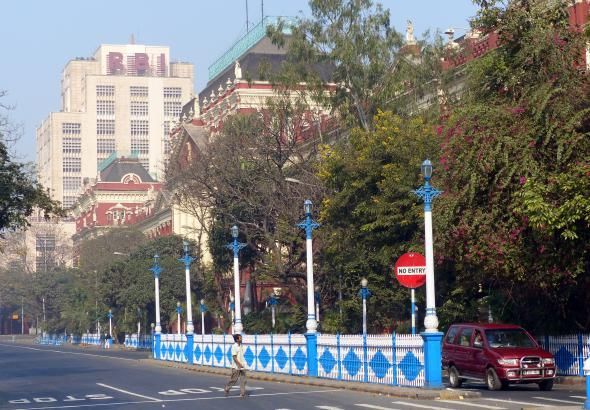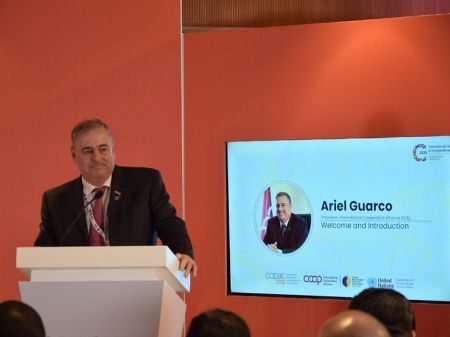
By Balu Iyer, regional director for the Alliance for the Asia-Pacific region
The Government of India, under the leadership of prime minister Narendra Modi has taken bold and audacious steps to curb the flow of black money and prevent the counterfeiting of notes. The demonetisation of Rs.500 and Rs.1,000 notes have been lauded by the public; despite the sudden hardships and serious disruptions caused in their day-to-day lives. While people have been queuing up patiently at traditional counters such as banks and ATMs, they have also been making increasing use of credit cards and rapidly adopting mobile payments. One would think that this grand and well-intended national need would use all legitimate financial vehicles available at its disposal to ensure inclusiveness, improve efficiency, and mitigate hardship. It is therefore hard to fathom why Cooperative Banks with their vast reach across villages, where much of Bharat (villages) resides, have been put out of circulation by the Reserve Bank of India (RBI).
The population of India as per 2011 census was 1.2 billion. Of the 1.2 billion Indians, 833 million (68.84%) live in 640,867 villages, while 377 million stay in urban areas. The description of Hosur, a tiny village 10 km from Haliyal in Uttara Kannada district of Karnataka would fit the majority of villages in India, “The village has no buses. People have to walk to Tatwanagi village, 2 km away, to catch a bus. There is no ATM either. Most of the villagers do not have bank accounts. Many keep their savings in the discontinued denominations. They have to exchange their money now and do not know where to go to exchange the old notes.” As per the 2011 Census, 58.7% households (67.8% urban & 54.4% rural) are availing banking services in the country. Thus, a significant proportion of the households, especially in rural areas, are still outside the formal fold of the banking system. According to RBI documents, there are 215,039 ATMs in India 40,345 of which are in rural areas and 58,433 in semi-urban areas. For a country of the size of India, the number of credit cards stands at 24.5 million. It is no surprise to see the following headlines these days - Barter Economy Is Reborn in Villages as India Cancels Cash; Demonetisation effect: Unbanked villages, small businesses badly hit as currency crisis continues.
India has made strides towards financial inclusion of Bharat and continues to make significant progress under the leadership of prime minister Modi. The Global Microscope 2016 report, which assesses the regulatory environment for financial inclusion across 12 indicators and 55 countries, gives high marks to India’s financial inclusion policy and even more its implementation. The report states that the Prime Minister's People Money Scheme (Pradhan Mantri Jan-Dhan Yojana), has the political will and institutional support of the government and the RBI. This is demonstrated with quantifiable goals, such as the opening of 100 million bank accounts for low-income families in 2014 and assisted by the Aadhaar national biometric identification programme. The plan also emphasises access to credit, insurance and pension facilities, as well as the goal of channeling all government benefits into beneficiaries’ bank accounts to increase usage. The RBI has targets to provide alternative sources of access through bank branches, bank correspondents, ATMs and satellite branches in villages of 2,000 or more residents and launch of the Unified Payment Interface (UPI) to facilitate digital money transfers. This is all well and good for tomorrow and the future. Over 90% of transactions in India today are cash transactions and more than 90% of the cash is not black money.
Co-operatives have a long and cherished history in India. Amul, India’s most beloved brand, has a model in which 15 million milk producers pour their milk in 144,500 dairy co-operative societies across the country. The Indian Farmers Fertilizer Cooperatives (IFFCO), the world’s number one co-operative in terms of turnover on GDP per capita, is celebrating its 50th year with a network of over 36,000 co-operative societies and reaching more than 55 million farmers in India. The Uralungal Labor Contract Cooperative Society (ULCCS), a 92-year old co-operative, invested $100 million to develop India's first technology park (UL Cyberpark) in the co-operative sector. The Swashrayi Mahila Sewa Sahakari Bank, SEWA members' largest co-operative, is the first of its kind in India owned by the self-employed women as shareholders. The Buldana Urban Credit Cooperative Society Limited represents 750,000 members and carries out business in excess of USD $1.3bn each year. It was very distressing to hear its young chief executive, Dr Sukesh Zamwar at the 12th International Cooperative Alliance Asia and Pacific (ICA-AP) Regional Assembly rue about the angst created in their members and the loss of trust in the co-operative credit institution. “How do I face my members? How do I tell members that they cannot deposit or take money out of their own institution?” Dear governor, do you have an answer for Dr Zamwar?
The rural credit co-operatives came into existence in the 1900s to provide credit to farmers at affordable cost and address the twin issues of rural indebtedness and poverty. Following independence, emphasis was given to develop the rural credit delivery system and increase the growth and volume of business in co-operatives. The three-tier rural credit structure consists of the Primary Agricultural Credit Societies (PACS, at the village level), the District Cooperative Banks (DCBs) and the State Cooperative Banks (StCBs) and at the urban level, the Urban Cooperative Banks (UCBs). According to the National Federation of State Cooperative Banks (NAFSCOB) report on the Performance of PACS (April 1, 2014 to March 31, 2015) there were 92,789 (PACS) with a total membership of 121 million. Around 72% of these were viable and if the potentially viable were also added then the percentage would have been 94%. The 371 DCBs with 14,907 branches had 3,347,203 members (individuals and co-operative societies) and the 32 StCBs with 1,131 office had 555,479 members (individual and cooperative societies). The entire co-operative structure covers nearly all the 640,867 villages in India (a caveat that not all are functional)! Dear governor, all these co-operative banks and societies that serve in the millions have come to a grinding halt. A petition filed in the Bombay High Court states by a UCB, “While there are huge queues lined up with public and private sector banks, the co-operative banks have been left out for want of legal tender adding to the chaos.” The petition points out that several hospitals, petrol pumps, medical stores have their accounts with the bank and they too will be affected. It states that there are 103,873 saving accounts being operated by individuals and 12,285 saving accounts of housing societies.
It is not that all is well with the co-operative credit delivery system. There is rot and this needs to be systematically addressed. Various committees, most notably the Vaidyanathan Committee have stressed the relevance and importance of co-operative credit societies to the development of agriculture and rural economy and the need for systemic reform, which have unevenly taken place. The RBI in its own assessment and the recommendations of the Committee on Financial Sector Assessment ensured 25 State Governments signed the MoU for the financial assistance under the government of India Revival Package for STCCS; phased out banks that have failed to obtain a license before 31 March 2012; commended StCBs and DCBs on the reasonable financial strength and expressed satisfaction on the asset quality of these banks. There is still much more work to be done to respect centrality of members; root out vested political interest, improve governance, professionalise management, strengthen bottom line, adopt technology, and counter fraud. So far, the approach of authorities (the RBI and successive governments) has been to keep co-operative banks on life support as this has suited narrow interests - pay lip service and gain political mileage. Dear governor, pulling the plug now will kill the system (if that is the intention); but will leave millions in dire need and in a much worse situation for no fault of theirs.
The support for co-operative banks to be allowed to engage in collection of deposits and exchange notes cuts across the political spectrum and across state boundaries. Among the chief ministers, those from Kerala (CPI-M), Orissa (BJD), and Punjab (SAD) have made fervent appeal to the RBI and Government of India. Farmers are starting to express their frustration by coming out to the streets. Some of the headlines in recent days: Demonetisation: Distress messages go out from cooperative banks in rural India; Surat farmers demand note-exchange at co-op banks, threaten to stop milk supply to Amul;. The wisdom of the RBI in curbing functions of banks that fall under its ambit is unclear as is the lack of support to the co-operative banks from the National Bank for Agriculture and Rural Development and the Ministry of Agriculture and Farmers Welfare under whose ambit co-operatives come under.
As per the Government of India, Constitutional (97th Amendment) Act, 2011 forming a Cooperative Society is a fundamental right under article 19(1)(i). Not many countries give this cherished right to its citizens. In the words of Shri. R. Gandhi, deputy governor of RBI, “Co-operatives are an exalted position in India. How and why do I say so? There are very many types of economic entities like a proprietary firm, partnership firm, society, trust, company, body corporate, beside the co-operative. Of these, which one has got mentioned in the Constitution of India? It is co-operatives. That too, not just a passing mention; but, a full section on how co-operatives have to be formed, governed and operated.” Let these be not just empty words from the RBI; let the need of co-operatives members during this time of crisis not be denied; let the trust of members in their own institutions not be diminished; let the apprehension of few misusing not punish the entire co-operative banking machinery. Let us protect the fundamental right of citizens to organise and encourage institutions that put people at the center. This will make India shine brighter and make Mera Bharat Mahan!




